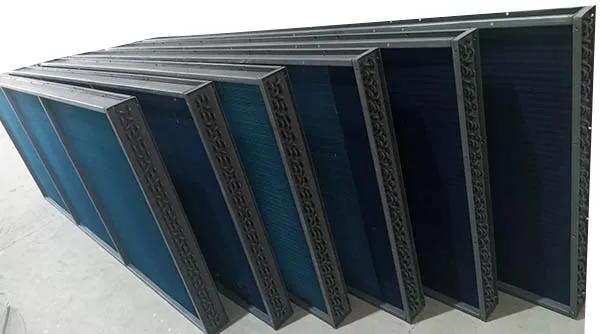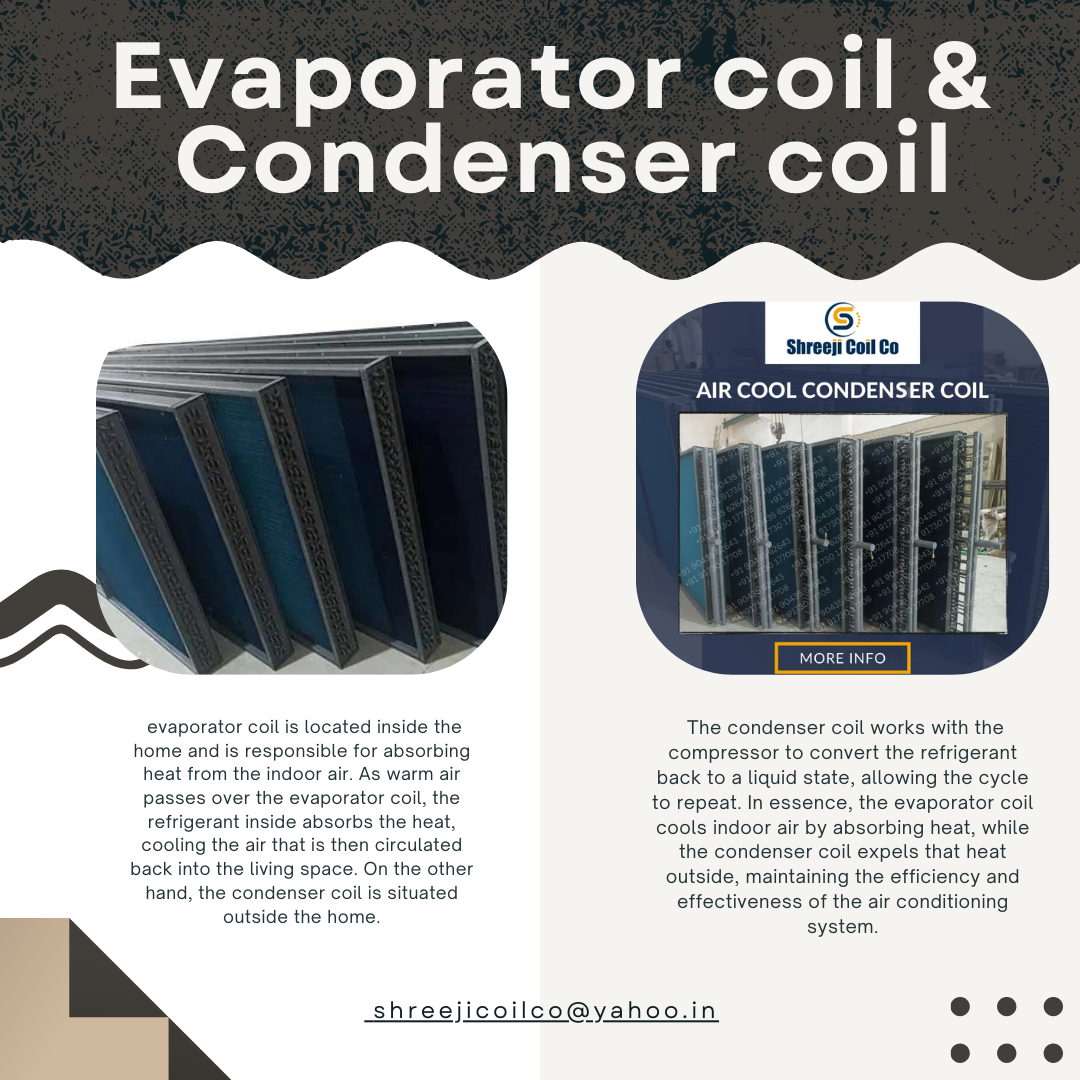The evaporator coil is most commonly produced by SHREEJI COIL CO. The component of the system where the refrigerant absorbs heat is the evaporator coil, also referred to as the evaporator core. It is the source of the arctic air. The air handler, which also houses the blower fan, houses the evaporator coil within or next to it. Copper, steel, or aluminium are used to make evaporator coils because of how well they conduct heat.

The majority of evaporators for household air conditioners are U-shaped tubes installed on panels. The panels are typically positioned to form a "A." These panels feature thin metal fins along them to increase the refrigerant's cooling effect and bring the cooling effect of the air closer to the coils. As the air conditioner operates, the compressor's tube that houses the evaporator coil draws cool, low-pressure liquid refrigerant.
The expansion valve allows the refrigerant to pass before it enters the Top evaporator coil manufacturer in Ahmedabad. This valve allows for the quick cooling of the liquid refrigerant by releasing pressure on it. When the liquid refrigerant exits the expansion valve, it is incredibly cold, which enables it to absorb heat from the surrounding air. The refrigerant flow to the evaporator is also managed by the expansion valve. SHREEJI COIL CO. estimates that using more sophisticated expansion valves, like thermostatic expansion valves that can precisely control the flow, will increase the system's overall energy efficiency.
Oh, the evaporator coil! This vital component of your cooling system works diligently behind the scenes to keep your home comfortable. At Shreeji Coil Co, we take pride in crafting top-notch evaporator coils that excel in efficiency and performance. These coils play a crucial role in the refrigeration cycle by absorbing heat from the air, allowing you to enjoy a crisp, cool atmosphere indoors. By partnering with Shreeji Coil Co, you can rest assured that your evaporator coil is in good hands, ensuring optimal functionality and peace of mind for years to come.
The evaporator coil is the part of your air conditioning system that captures heat from the inside air. It frequently appears inside the air handler or somewhere connected to the furnace. With the aid of a condenser coil, it completes the heat exchange process that produces cool air.
The efficiency of your system depends on the cleanliness and regular maintenance of your evaporator coil. Your AC unit's energy consumption can rise by up to 30% due to dirty coils. Poorly maintained coils can also result in additional issues with the system, including frozen coils, an overheated compressor, and poor cooling efficiency because of limited heat transmission.
Evaporator coils and condenser coils work in tandem to produce cold air and complete the heat exchange cycle. They form one continuous loop, where the evaporator coils absorb heat and the condenser coils release heat. The cooling process could not be completed without both sets of coils.The evaporator and condenser coils inside a central air conditioner or heat pump make it possible for these systems to complete the heat exchange process, which is the basis of refrigerated cooling and,
An evaporator coil and a condenser coil are crucial components of an air conditioning system, but they serve different functions. The evaporator coil is located inside the home and is responsible for absorbing heat from the indoor air. As warm air passes over the evaporator coil, the refrigerant inside absorbs the heat, cooling the air that is then circulated back into the living space. On the other hand, the condenser coil is situated outside the home. After the refrigerant has absorbed heat from the indoor air, it travels to the condenser coil. Here, the refrigerant releases the absorbed heat to the outside air. The condenser coil works with the compressor to convert the refrigerant back to a liquid state, allowing the cycle to repeat. In essence, the evaporator coil cools indoor air by absorbing heat, while the condenser coil expels that heat outside, maintaining the efficiency and effectiveness of the air conditioning system.
